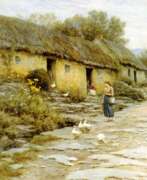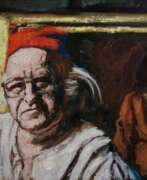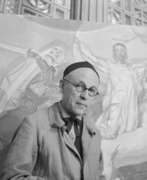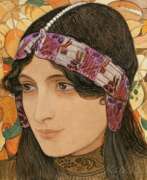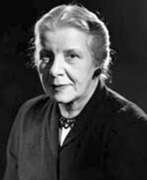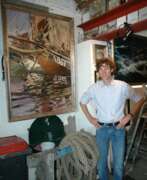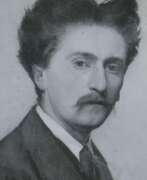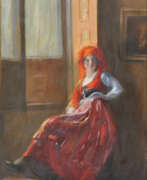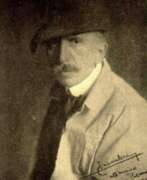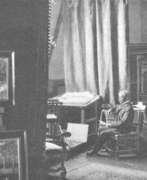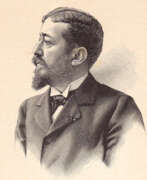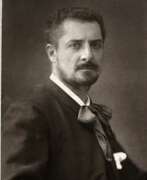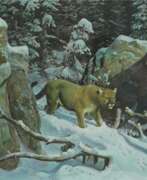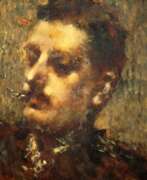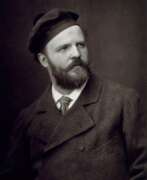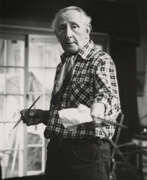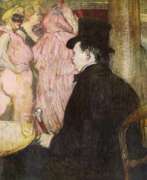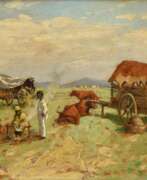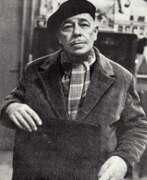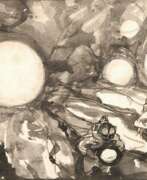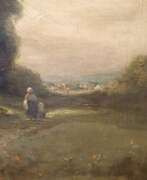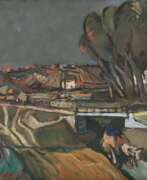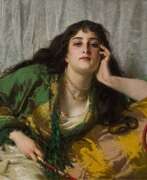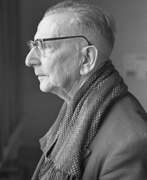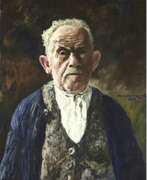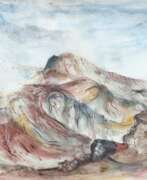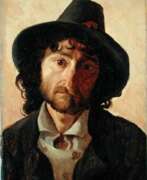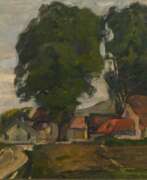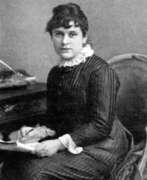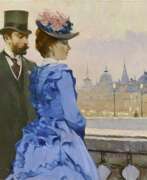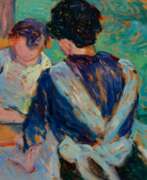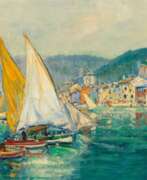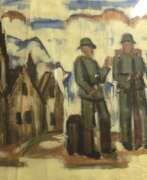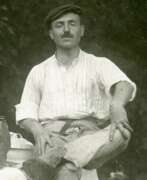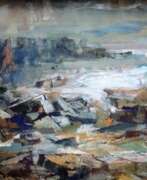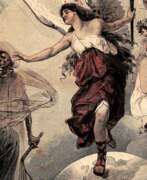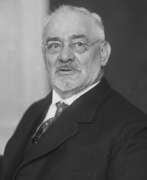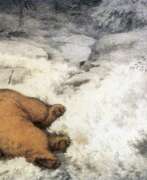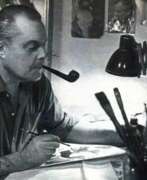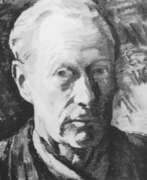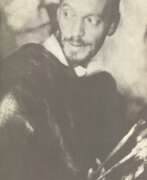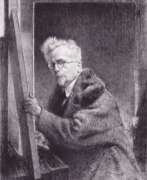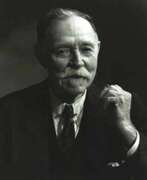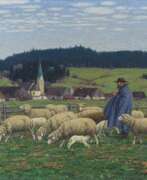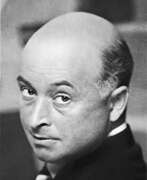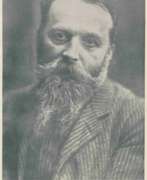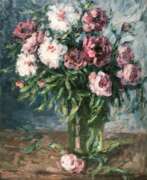Illustrators Impressionism
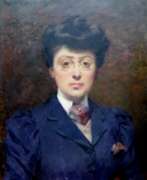

Louise Abbéma was a French painter, sculptor, and designer, celebrated for her work during the Belle Époque. Born in Étampes in 1853 into an affluent Parisian family, she became well known for her portraits, particularly of the famous actress Sarah Bernhardt, and for decorative panels commissioned for various public buildings in Paris and the Palace of the Governor in Dakar, Senegal.
Abbéma's art often depicted the upper echelons of French society and reflected the Impressionist style through her light and rapid brushstrokes. She was also notable for her involvement in the women's movement, where she contributed to the emerging image of the 'New Woman' by portraying androgynous figures and themes of intellectualism and freedom.
Among her many honors, Abbéma was awarded the Palme Academiques in 1887, nominated as the Official Painter of the Third Republic, and in 1906, she became a Chevalier of the Legion of Honour. Her works, such as "Lunch in the Greenhouse" and "Portrait of Sarah Bernhardt," have seen a resurgence in popularity as the contribution of women to historical art gains more recognition.
For those interested in the evocative and historically rich artworks of Louise Abbéma, consider subscribing to our updates. We'll keep you informed about new sales, auctions, and exhibitions featuring Abbéma's work, ensuring you're always connected to the latest offerings in the art and antique collectors' sphere.
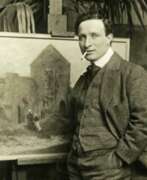

Charles Garabed Atamian is a French artist of Armenian origin born in Turkey.
He studied for a time at the Academy of Fine Arts in Venice, then worked as chief designer at a porcelain factory in Istanbul. In 1894, Atamian worked with a team of artists to decorate the new palace of Sultan Abdul-Hamid Il in Yildiz, on the European side of the Bosphorus. He designed, among other things, the patterns for the ceramic tiles of the palace walls.
In 1897, Atamian emigrated to France and began illustrating books and magazines, as well as working on sets for several Parisian theaters. Since 1903 Atamian participated in various exhibitions with unquestionable success. He painted landscapes, sea and beach scenes with children (including some 200 paintings at Saint-Gilles in the Vendée, where he resided each year during the summer months from 1923 to 1939). Throughout his career he was a fine portrait painter. He became a member of the National Society of Artists in 1927.
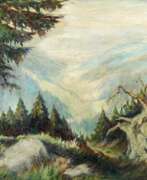

Friedrich August Baer was a German painter who initially pursued law but turned to painting after being inspired by Eduard Schleich's work. He was a self-taught artist who received guidance from Adolf Lier and Hermann Baisch. Baer was a member of the Munich Art Association and exhibited his works in various exhibitions across Germany and Austria. He became interested in painting high mountain landscapes and was occasionally misunderstood for his unique style. Baer was also a writer and book illustrator and received several medals and awards for his artistic achievements.


Hans Baluschek, full name Alphons Anton Alexander Hans Ernst Karl Maria Baluschek, was a German painter, graphic artist and writer, representative of the New Materiality style.
Baluschek studied at the Royal Academy of Arts, and in 1900 became a member of the Berlin Secession, a group of artists that also included Ernst Barlach, Max Beckmann, and Wassily Kandinsky. Baluschek was always socially critical, which was reflected in the subjects of his paintings. Many of his paintings are dedicated to the working class of Berlin, he addressed the gray everyday life of Berlin: gray air, gray walls, gray people. Baluschek is often categorized as a German Expressionist because of his emotional style, but his style has something of New Objectivity, Impressionism, and naive painting. He also drew illustrations for the popular children's book Little Peter's Trip to the Moon, and collaborated with periodicals as an illustrator.
World War I instilled patriotic feelings in Baluschek, and he painted a number of subjects on this theme. After the war, he joined the Social Democratic Party and became involved in labor movements. In 1926 he helped establish an artists' relief fund and later became director of the annual Berlin Exhibition. The German Nazis, who came to power in 1933, declared Baluschek a Marxist and a "degenerate artist," suspended him from all positions, and banned him from exhibiting.
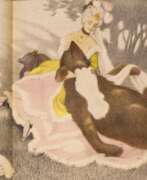

Moritz Bauernfeind was an Austrian painter, graphic artist, illustrator and cartoonist.
Moritz studied at the Academies of Fine Arts in Vienna and Munich, then at the Académie Julian in Paris, early landscapes painted in the style of Impressionism.
Bauernfeind gained fame in the early 20th century as an illustrator of political satire, notably in Meggendorfer's Humorous Notes and Der Flo. Between 1900 and 1905 he published more than 200 satirical drawings in Der Scherer and Simplicissimus, and in 1909 a series in the Illustrirten Zeitung in Leipzig. And color illustrations for fairy tales and legends were eagerly published by juvenile and many other publications. Bauernfeind's fantastic genre images with stylized figures and a touch of burlesque attract with their unusualness and mystery.
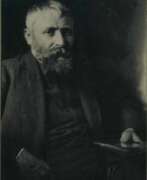



Vasiliy Vasiliyevich Belyashin (Russian: Василий Васильевич Беляшин) was a distinguished Russian and Soviet artist, acclaimed for his contributions to the Silver Age of Russian art. Born on September 8, 1874, in Vilnius, within the Russian Empire, and passing on May 8, 1929, in St. Petersburg, USSR, Belyashin's career spanned the late 19th and early 20th centuries, a period marked by significant artistic evolution. His versatility as an artist is evident in his work as a portrait painter, landscape artist, printmaker, and illustrator, with a particular renown for his series of self-portraits.
Operating mainly within the impressionist style, Belyashin's artistry was not confined to a single genre. He excelled across various forms, including landscape painting, portraits, self-portraits, and still life, showcasing a broad skill set that resonated with the Symbolist and Impressionist movements of his time. His educational background and associations with artistic societies, such as the Kuindzhi Society, the Art Community, and the Partnership of Artists, further underline his integral role in the artistic community of his era.
Though detailed records of Belyashin's works in specific museums or galleries were not immediately available, the acknowledgment of his art in auctions and the recognition by cultural institutions suggest a lasting legacy. His work, celebrated for its emotional depth and technical proficiency, continues to capture the imagination of art collectors and enthusiasts alike.
For those intrigued by Vasiliy Vasiliyevich Belyashin's unique contribution to the world of art, staying updated on auctions and exhibitions featuring his work is invaluable. Signing up for updates related to Belyashin can ensure you remain informed about new sales and auction events, offering a chance to connect more deeply with this master's artistic journey.
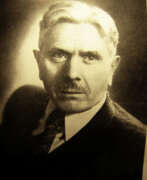

Mikhail Pavlovich Bobyshov (Russian: Михаил Павлович Бобышов) was a distinguished Soviet Russian painter, stage decorator, and professor, renowned for his contributions to the world of art. Born on November 7, 1885, in the Russian Empire and passing away on July 7, 1964, in the USSR, Bobyshov's artistic journey was marked by his affiliation with prestigious institutions and his recognition as a People's Artist of the Russian Federation. His work spanned various genres, including urban landscapes and portraits, demonstrating a unique style that blended realism with elements of impressionism, ornamentation, and decorationism.
Bobyshov's mastery in graphic art, particularly in book and magazine illustrations, as well as theatrical and decorative art, positioned him as one of the greatest masters of Soviet graphic art. His innovative approach to art was significantly influenced by the World of Art school, contributing to his legacy as a significant figure in the Leningrad School of Painting.
Among his notable works, "Evening in Moscow from the Series Victory Days in Moscow" stands out as an exemplar of his skill in capturing the essence of his subjects through gouache on paper. This piece, along with others, has been featured in prestigious auctions, highlighting Bobyshov's lasting impact on the art world.
For art collectors and experts, the work of Mikhail Pavlovich Bobyshov offers a rich tapestry of historical and cultural significance, encapsulating the essence of a pivotal era in Soviet art. His dedication to exploring and advancing the boundaries of artistic expression cements his status as a pivotal figure in the art community.
Stay updated on new product sales and auction events related to Mikhail Pavlovich Bobyshov by signing up for updates. This subscription ensures you're always informed about opportunities to engage with the enduring legacy of Bobyshov's art.
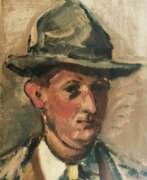

Ludwig Bock was a German painter and graphic artist, draughtsman, and illustrator.
He studied painting at the Munich Academy and was a member of the Munich Secession. Bock's work was influenced by Matisse and Cézanne, as well as by the artists of the Scholl circle. His watercolors, painted mainly in Paris and inspired by the Impressionists who lived there, depict landscapes, folk and fair scenes, and nude scenes.
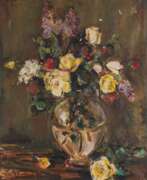

Stanisław Wincenty Chlebowski is a Polish impressionist painter and illustrator. His main themes are still lifes, floral compositions, genre scenes and landscapes, in particular views of Gdańsk and its surroundings. His paintings are in the collections of the National Museum in Gdańsk and the National Maritime Museum in Gdańsk.


Edward Harrison Compton was a German landscape painter and illustrator of English descent.
Like his father he was inspired by the Alps to become a mountain painter (Bergmaler) working in both oils and watercolour. However, an attack of Polio at the age of 28 meant that he had to find more accessible landscapes to paint in Germany, England, northern Italy and Sicily. He also provided illustrations for several travel books published by A & C Black.


Edward Theodore Compton was an English-born, German artist, illustrator and mountain climber. He is well known for his paintings and drawings of alpine scenery, and as a mountaineer made 300 major ascents including no fewer than 27 first ascents.


Charles Edward Conder, an Anglo-British painter, was a pivotal figure in the Australian art scene, known for his significant contributions to the Heidelberg School and the famous 9 x 5 Impressions Exhibition. Born in England in 1868, Conder's artistic journey began in earnest when he moved to Australia, where he immersed himself in the country's landscapes and developed a unique style that melded his natural instinct for color and design with the influences of his contemporaries and the environment.
Charles Edward Conder's time in Australia was marked by collaborative efforts with other notable artists, including Tom Roberts and Arthur Streeton, with whom he shared a studio and participated in the notable 9 x 5 Impressions Exhibition. His work during this period, characterized by a distinctive use of color and form, captured the essence of the Australian landscape while reflecting his personal artistic sensibilities.
In 1890, Charles Edward Conder's artistic pursuits took him to Europe, where he studied in Paris and mingled with prominent artists and writers of the day. His work continued to evolve, embracing the influences of Aestheticism and the Bohemian lifestyle he led. Despite his artistic success, Conder's life was marred by health issues, including the effects of syphilis, which he contracted early in his career. His later years were spent in a struggle with the disease, culminating in his death in a sanatorium in 1909.
Today, Conder's legacy is preserved in his contributions to Australian art and the influence he had on his peers and successors. His works continue to be celebrated for their beauty, emotional depth, and the unique perspective they provide on the landscapes and culture of Australia during his time.
For those interested in delving deeper into the life and works of Charles Edward Conder, his art remains a testament to his skill and vision, offering a window into the vibrant art scene of his era and the landscapes that inspired him.
If you're captivated by the unique blend of Australian landscapes and European artistry in Charles Edward Conder's work, or if you wish to discover more about the Heidelberg School's influence on art and culture, we invite you to sign up for updates. Stay informed about upcoming exhibitions, sales of Conder's works, and exclusive insights into the world of art collecting. Don't miss the opportunity to deepen your appreciation for one of the luminaries of Australian art.
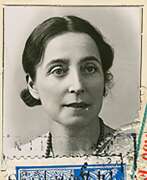

Margherita known as Mara Corradini was an Italian painter and illustrator. Daughter of an industrialist, she studied in Naples, Munich, at the Académie Julian in Paris, in Berlin as a pupil of Martin Brandenburg and then of Henry Luyten at the Institute of Fine Arts in Brasschaat. She obtained the Great Bronze Medal at the 34th International Exhibition of Fine Arts in Naples, as well as in 1912, a 1st class honorary diploma and a gold medal at the Academy of Weimar. In 1924, she won a new honorary diploma at the International Exhibition of Women's Portraits and in 1927 at the International Exhibition in Bordeaux. His paintings Dutch Landscapes and Low Tide were purchased by King Victor-Emmanuel III.
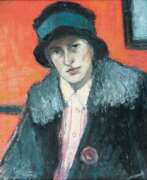

Gabriele Daube is a German artist known for her cityscapes and still lifes.
Gabriele Daube's works are often characterized by bold colors and expressive brushwork. She drew inspiration from the natural world, including city and seascapes.
In addition to painting, Daube also worked as a graphic artist and illustrator.
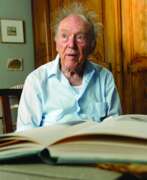

Gérard de Palézieux is a Swiss painter and engraver.
From the very beginning, Palézieux's vocation was to attempt to render, as closely as possible to his emotions, the spectacle of the world - landscapes, interiors, objects, flowers or fruit. A rare occurrence in his time, characterised by constant questioning of the status of art and representation, he was never shaken by fashions and persevered alone in the faithful translation of reality.
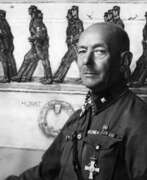

Ludwig Julius Christian Dettmann was a German artist of the late 19th century and the first half of the 20th century. He is known as one of the leading representatives of the Secession in Germany.
Dettmann began his career as an illustrator and in 1895 became a professor at the Berlin Academy of Arts. He then switched to landscape painting, worked in oil and watercolor techniques and became one of the first Impressionists in Germany. In 1898 the artist joined the Association of German Free Artists and co-founded the Berlin Secession. In 1900 Dettmann became director of the Königsberg Academy of Arts and promoted the development of the Nida colony of landscape artists on the Curonian Spit.


Maynard Dixon was an American painter and illustrator. Dixon became known for his Western landscapes, Native American images, scenes of cowboys and shepherds, and his work during the Great Depression.
Dixon studied in San Francisco and New York, where he worked in magazine illustration. He also traveled throughout Europe, where he found inspiration in the work of Renaissance artists and the Impressionists. Upon his return to the United States, however, he began to pursue the genre of Western painting, which became his main passion. One of Dixon's most famous series of works is The Myth of the West, in which he depicted the Western landscape and cowboys using bright colors and geometric shapes. His work was popular in the 1920s and 1930s, and he was often invited to exhibit his work in museums and galleries.
In addition, Dixon also worked as an artist-designer for film studios, creating sets and costumes for Westerners. His work has been used in such famous films as Mutiny on the Bounty, The Sheriff, and Mighty Joe Yankee. Maynard Dixon's work is in the collections of many museums, including the National Museum of Western Painting in Oklahoma City and the Fenimore Cooper Museum in New York City.
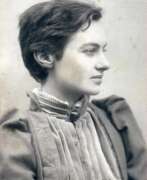

Mary Edith Durham was a British artist, anthropologist and writer who is best known for her anthropological accounts of life in Albania in the early 20th century. Her advocacy on behalf of the Albanian cause and her Albanophilia gained her the devotion of many Albanians who consider her a national heroine.


Karl Felix Eisengräber was a German painter. He began his studies at the Leipzig Academy of Art, after which he studied at the Academy of Fine Arts, Munich under Ludwig von Herterich and Paul Hoecker. He was a member of the Luitpold Group, which had split off from the Munich Artists' Association, and of a group called The Independents (Die Unabhängigen). After World War I, by arrangement with Springer Verlag, Eisengräber provided the illustrations for new editions of medical books by Ferdinand Sauerbruch.
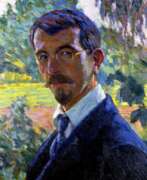

Wilhelm Heinrich Ernst Eitner was a German painter of the late nineteenth and first half of the twentieth centuries. He is known as an impressionist painter and teacher.
Eitner produced portraits, landscapes, and woodcuts in a style reminiscent of Japanese art. Despite initial rejection in German society of his impressionist style of painting, over the years he gained recognition and even the title "Claude Monet of the North." Eitner was a member of numerous art associations. His works are preserved in the Hamburg Kunsthalle.
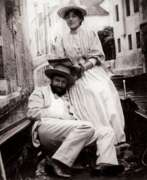

Jean-Louis Forain was a French painter, graphic artist and book illustrator.
Jean-Louis Forain began his career as a cartoonist. He worked for several Parisian magazines including Le Monde Parisien and Le rire satirique. Later studied at the École des Beaux-Arts with Jean-Baptiste Carpeaux and Jean-Léon Gérôme. He was friends with Paul Verlaine, Arthur Rimbaud, Claude Monet, Edouard Manet and Edgar Degas.
Jean-Louis Forain is best known for his keen observations on Parisian society, especially its social and political scenes. His subjects were often cabarets, theatres, cafés and the bustling streets of Paris. He depicted life of the working class, the bourgeoisie and the upper class with a satirical and critical eye.
Forain's artistic style was characterised by bold brushwork, strong use of line and a limited colour palette. His works often depicted scenes with dynamic movement, conveying the energy and atmosphere of the moment. His paintings were often theatrical in character, reflecting his interest in the world of entertainment.
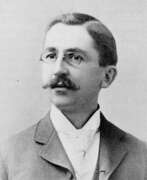

Abbott Fuller Graves was an American painter and illustrator who specialized in decorative open air garden paintings and floral still lifes. His use of thick brushstrokes, bright colors, and natural light shows the influence of European impressionism.
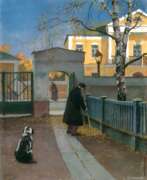

Mikhail Markianovich Germashev (Russian: Михаил Маркианович Гермашев) was a Russian painter known for his exquisite landscape paintings. Born in 1867 in Kharkov, he studied at the Moscow School of Painting, Sculpture and Architecture. Germashev's works are celebrated for their atmospheric depictions of Russian winters and serene rural scenes.
Germashev gained significant recognition in the late 19th century. His painting "Snow Fell" won first prize at the Moscow Society of Arts in 1897 and was acquired by the renowned collector Pavel Tretyakov. Other notable works include "Gray Day" (1894), "Unfrozen River" (1898), and "Rainy Day" (1902). These paintings are displayed in various museums across Russia, reflecting Germashev's prominence in the art world.
In the 1920s, Germashev moved to Paris, where he continued to paint and exhibit his works. His landscapes, characterized by their high craftsmanship and beauty, remained popular among collectors and art enthusiasts. His works can be found in prestigious collections, including the Tretyakov Gallery and the Museum of Moscow.
Stay updated on the latest sales and auction events for works by Mikhail Markianovich Germashev by subscribing to our newsletter. Don't miss the opportunity to add a piece of Russian art history to your collection!


Norbert Goeneutte was a French impressionist painter, printmaker, and illustrator.
Goeneutte is best known as the author of drawings for the novel Earth by Emile Zola. He also created more than 150 etchings and lithographs.
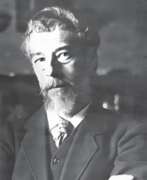

Pyotr Petrovich Gosławski (Russian: Пётр Петрович Гославский) was a Russian painter and graphic artist, known for his landscape paintings and illustrations. Born on January 29, 1871, in Saint Petersburg, he belonged to a noble family. Gosławski's works are celebrated for their realistic and impressionistic styles, reflecting the beauty of the Russian countryside and everyday life.
Gosławski's contributions to the art world include participation in numerous exhibitions and his works being held in prestigious collections like the Tretyakov Gallery. His ability to capture light and texture made his landscapes particularly admired. Additionally, he illustrated several works of Russian literature, adding to his legacy as a versatile artist.
Gosławski's works continue to be appreciated in various regional museums and private collections. He passed away in 1919 from typhus, leaving behind a rich artistic heritage. Sign up for updates on Pyotr Petrovich Gosławski to stay informed about new product sales and auction events related to his works.
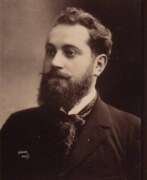

Albert Guillaume was a French artist, cartoonist, illustrator, and master of the poster.
Guillaume was a prolific illustrator: he worked for magazines, books, and almanacs, and his satirical drawings were published in Parisian humor magazines. He was also a painter and designer of theater posters and advertising posters. Working for the large Parisian printing company Camis, he designed a series of highly successful posters for commercial goods.
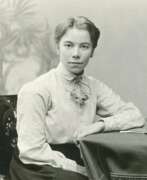

Elena Genrikhovna Guro (Russian: Еле́на Ге́нриховна Гуро́), born in 1877 in St. Petersburg, Russia, and passing in 1913, was a pioneering figure in the Russian Futurist movement. As a multifaceted artist, she delved into painting, writing, and poetry, marking her as a versatile and innovative force in the early 20th century Russian avant-garde. Guro's work is distinguished by its embrace of Futurism, a movement that sought to break away from traditional art forms and explore dynamic means of expression. Her contributions were not only limited to visual arts but also extended to literature, where she experimented with narrative forms and language, often incorporating nonsensical elements to challenge conventional aesthetics.
Guro's literary works, such as "The Little Camels of the Sky," demonstrate her experimental approach to language and form, embodying the Futurist fascination with the aesthetic possibilities of words. This approach is evident in her poetry and short stories, where she utilized single-word sentences and nonsense words to capture the essence of moments or convey a childlike perspective. Such techniques allowed her to explore the texture of language and its visual and auditory qualities, making her work resonate with the innovations of the Futurist and Dada movements.
Despite her early death at the age of 36, Guro's legacy continues to be celebrated for its contribution to the evolution of Russian modernism. Her work bridged the gap between the Symbolist movement and Futurism, contributing significantly to the dialogue around art and literature in her time. Her husband, Mikhail Matyushin, further propagated her artistic theories, ensuring that her innovative approach to color and form continued to influence Russian art and literature after her passing.
Elena Genrikhovna Guro remains an inspirational figure in the world of art and literature, embodying the spirit of innovation and exploration that defined the early 20th century avant-garde. Her works, which blend poetic language with vivid imagery, invite audiences to reconsider the boundaries between different art forms and the potential of language as an artistic medium.
For those intrigued by the rich tapestry of Russian Futurism and the unique voice of Elena Guro, signing up for updates on her works, sales, and auction events can deepen your appreciation and understanding of this pivotal artist's contributions. This subscription will ensure you stay informed about the latest insights and opportunities related to Elena Genrikhovna Guro's enduring legacy.
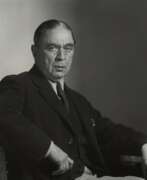

William Lee Hankey was a British painter and book illustrator. He specialised in landscapes, character studies and portraits of pastoral life, particularly in studies of mothers with young children such as «We’ve Been in the Meadows All Day».
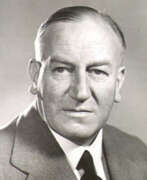

Harold Brocklebank Herbert was an early 20th century Australian painter and printmaker, an illustrator and cartoonist. A traditionalist, as an art teacher he promoted representational painting, and as a critic was an influential detractor of modernism. He was the first war artist to be appointed for Australia in the Second World War, serving for 6 months with the Australian Infantry Forces in Egypt in 1941 and in the Middle East in 1942. Herbert continued the Australian impressionist style and exercised particular skill with watercolour washes and his etchings, lithographs and cartoons are in an economical, sketchy style.
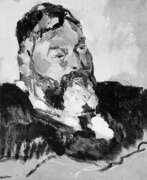

Otto Hettner was a German painter, graphic artist, illustrator and sculptor.
Hettner studied at the Academy of Fine Arts in Karlsruhe with Robert Petzelberger and at the Académie Julian in Paris, then lived in Florence for a year and studied again, this time at the Dresden Academy of Fine Arts. In 1916 he became a member of the executive committee of the Free Secession, and the following year he became director and professor at the Dresden Academy of Fine Arts, where he worked until 1927.
Otto Hettner illustrated various books for well-known publishing houses. After the artist's death, the Nazis, who came to power in Germany, considered Hettner's works degenerate, and in 1937, as part of the campaign "Degenerate Art" 15 of his works were confiscated from museums.
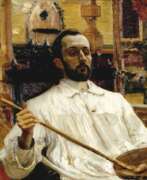

Dmitry Nicolajevich Kardovsky (Russian: Дмитрий Николаевич Кардовский) was a Russian artist, illustrator, and stage designer, celebrated for his multifaceted contributions to the world of art. Born in 1866 near Pereslavl-Zalessky, Kardovsky initially pursued law at Moscow University before devoting himself to art at the Imperial Academy of Arts under the tutelage of Pavel Chistyakov and Ilya Repin. His educational journey included a period in Munich, studying with Anton Ažbe, which enriched his artistic approach, combining Russian and European influences.
Kardovsky is perhaps best known for his mastery in drawing and book illustration. His work, characterized by a deep understanding of the literature he illustrated, brought to life the narratives and characters of Russian literary classics by Chekhov, Gogol, Lermontov, and Tolstoy, among others. His illustrations for works such as "Kashtanka" by Anton Chekhov and "Nevsky Prospekt" by Gogol are particularly noted for their vivid expression and delicate precision.
Beyond his illustrative prowess, Kardovsky made significant contributions as an educator, imparting his knowledge to a generation of artists who went on to have distinguished careers of their own. His commitment to teaching was exemplified by an exhibition in 1929, where the majority of the works displayed were by his students, underscoring his influence and legacy in Russian art education.
Kardovsky's work extended to the theater, where he created costumes and scenery, notably for the Maly Theatre in productions of Ostrovsky and Turgenev. His engagement with historical themes was also prominent, with series of paintings reflecting key periods in Russian history, demonstrating his versatility and deep connection to his cultural heritage.
His latter years were spent in Pereslavl-Zalessky, where he continued to produce landscapes and portraits, capturing the essence of Central Russia and its inhabitants with a particular fondness and respect. Kardovsky's work remains an integral part of Russian and Soviet art history, bridging the styles of the Silver Age with post-revolutionary traditionalism.
For those interested in exploring the rich tapestry of Russian art and the pivotal role played by Dmitry Kardovsky, signing up for updates on new product sales and auction events related to his work is highly recommended. This subscription ensures enthusiasts and collectors alike stay informed about opportunities to engage with Kardovsky's enduring legacy.
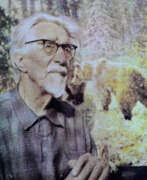

Alexey Nikanorovich Komarov (Russian: Алексей Никанорович Комаров) was a Russian and Soviet artist of the twentieth century. He is known as a painter, sculptor and animalist.
Alexey Komarov became famous for his illustrations in children's books and graphic works. His works cover a variety of subjects, from landscapes to animals. He has also created posters on a variety of subjects, including children's health care and the defense of the homeland during World War II. Komarov is also known for his watercolors as well as his sculptural works, including animal figures and busts. His works decorate various museums and exhibition pavilions.
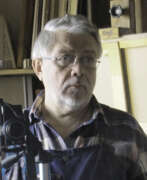

Alexander Serafimovich Kotlyarov (Russian: Александр Серафимович Котляров) is a Soviet and contemporary Russian artist, He is known as a painter, graphic artist, teacher and scholar, PhD in art history.
Alexander Kotlyarov works in a style close to Impressionism, especially in portraits and still lifes. He also creates landscapes and engravings, including illustrations for the works of M. E. Saltykov-Shchedrin. The artist has participated in numerous exhibitions and his works are in private and public collections in Russia, France and the USA.
Since 1973 he has been teaching drawing and painting, and since 2006 he has been the head of the department of the Faculty of Graphic Arts at the Moscow State University of Printing Arts.
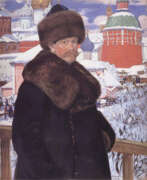

Boris Mikhailovich Kustodiev (Russian: Бори́с Миха́йлович Кусто́диев) was a distinguished Russian artist and painter, celebrated for his vivid portrayal of the Russian culture and way of life. Born in Astrakhan in 1878, Kustodiev's artistic journey began at a young age, leading him to study under the renowned Ilya Repin at the Imperial Academy of Arts. His works, characterized by their rich color palette and intricate detail, capture the essence of Russia's social and cultural fabric during the early 20th century.
Kustodiev's art is notable for its depiction of Russian peasantry, landscapes, and bourgeois celebrations, embodying the spirit and vibrancy of Russian folklore and traditions. His paintings such as "The Merchant's Wife" and "Maslenitsa" are celebrated for their lush visual storytelling and are housed in prestigious museums, including the State Russian Museum in St. Petersburg. These works reflect Kustodiev's fascination with the Russian merchant class and traditional festive gatherings, showcasing his skill in blending realism with a folkloric charm.
Beyond painting, Kustodiev's contributions to theatre and book illustration further demonstrate his versatile talent and deep connection to Russian cultural heritage. Despite facing personal challenges, including a debilitating illness that confined him to a wheelchair, Kustodiev's prolific output continued unabated, leaving behind a legacy that continues to enchant and inspire. His ability to capture the beauty and complexity of Russian life has made his work invaluable to collectors and experts in art and antiques alike.
For those intrigued by the rich tapestry of Russian culture and history as depicted through the lens of one of its most celebrated artists, we invite you to sign up for updates. Stay informed on new product sales and auction events related to the illustrious works of Boris Mikhailovich Kustodiev. This subscription is your gateway to the vibrant world of Russian art, offering exclusive insights and opportunities for collectors and enthusiasts.
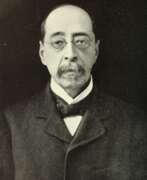

John La Farge was an American artist whose career spanned illustration, murals, interior design, painting, and popular books on his Asian travels and other art-related topics.
La Farge is best known for his production of stained glass, mainly for churches on the American east coast, beginning with a large commission for Henry Hobson Richardson's Trinity Church in Boston in 1878, and continuing for thirty years. La Farge designed stained glass as an artist, as a specialist in color, and as a technical innovator, holding a patent granted in 1880 for superimposing panes of glass. That patent would be key in his dispute with contemporary and rival Louis Comfort Tiffany.
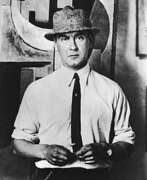

Vladimir Vasilyevich Lebedev (Russian: Влади́мир Васи́льевич Ле́бедев) was a Russian and Soviet artist of the twentieth century. His work goes far beyond a single style or genre. Lebedev became famous for his illustrations for children's books, satirical drawings and paintings.
Vladimir Lebedev is also famous for propaganda and political posters, which he had to create in a short time in the most difficult periods of Russian history - after the revolution of 1917 and during the Great Patriotic War. The artist had to meet the political demands, yet all of Lebedev's works turned out to be interesting and atmospheric.
Before and after the change of power in Russia, Lebedev was a member of several societies of artists - the Union of Youth, the Association of New Currents in Art, and the Four Arts. He was also the founder of the Leningrad school of book graphics.
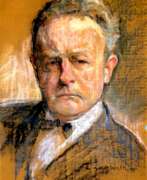

Heinrich Eduard Linde-Walther was a German painter and illustrator. He studied painting at the Academy of Fine Arts in Munich with Gabriel von Hackl and Paul Hoecker. Also at the Académie Julian in Paris. Member of the Berlin Secession since 1902.
Heinrich Eduard Linde-Walter was mainly known for landscapes and still lifes, but also did numerous children's portraits and illustrations for children's stories. Most of his works were commissioned by individual clients and remain in private ownership.
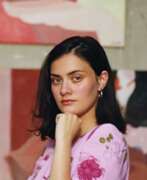

Inès Longevial is a French artist who was born in 1990. She is known for her distinctive figurative paintings that often depict female subjects in a dreamlike, surrealistic style. Longevial's works often feature bold, expressive brushstrokes and a muted color palette, creating a sense of intimacy and introspection.
Longevial began her artistic career studying fashion design at the École Duperré in Paris, but soon shifted her focus to painting. Her first solo exhibition, "Jeux d'eau" (Water Games), was held in Paris in 2015, and since then, her work has been exhibited in galleries and museums around the world.
Longevial's paintings have been described as capturing the essence of femininity and exploring the complex relationships between women and their bodies, desires, and emotions. Her work has been compared to that of artists such as Frida Kahlo and Tamara de Lempicka, and has attracted a growing following of admirers and collectors.


Sergey Vasilyevich Malyutin (Russian: Сергей Васильевич Малютин) was a distinguished Russian painter, architect, and designer, celebrated for his multifaceted contributions to the world of art and design. Born in Moscow in 1859 to a merchant family, Malyutin's artistic journey began after an exhibition by the Peredvizhniki inspired him to pursue art. His formal education at the Moscow School of Painting, Sculpture and Architecture honed his talents, leading to a diverse career that spanned painting, set design for operas and ballets, and architectural endeavors.
Malyutin is perhaps best known internationally for designing the first matryoshka doll in 1890, a seminal work that has become an iconic symbol of Russian culture. His involvement in the Arts and Crafts Movement influenced his work, integrating traditional Russian folk motifs into his designs and paintings. Notably, his architectural designs, including the Church of the Holy Spirit in Talashkino and the Pertsov House in Moscow, showcase his dedication to the Russian Revival movement, blending fantastic folk motifs with architectural creativity.
Throughout his career, Malyutin also played a significant role in education, teaching at the Moscow School of Painting, Sculpture and Architecture and advocating for Socialist Realism. His contributions to Russian art were not limited to his creations; he was instrumental in founding the Association of Artists of Revolutionary Russia, emphasizing the importance of art in societal development.
For those interested in exploring the legacy of Sergey Malyutin, his works offer a window into the fusion of traditional Russian art with the innovative currents of his time. Collectors and experts in art and antiques will find his contributions to Russian arts and crafts, especially his role in the creation of the matryoshka doll, to be of particular interest.
To stay updated on exhibitions and auction events featuring Sergey Vasilyevich Malyutin's work, sign up for updates. This subscription is an invaluable resource for enthusiasts looking to deepen their understanding of Malyutin's impact on Russian art and design.
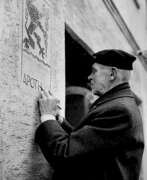

Burkhard Mangold was a Swiss artist, poster designer, illustrator, painter, graphic artist, and stained glass artist. He created murals and was a pioneer of Swiss poster art, developing a unique style of his posters. He has been called the "grandfather of the Basel School.


Arvid Mather was a German impressionist and modernist painter, illustrator, and graphic artist.
He studied painting at the Düsseldorf Academy and belonged to Heinrich Nauen's circle. Mather participated in the exhibitions of Junges Rheinland as well as in the Rheinische Secession.
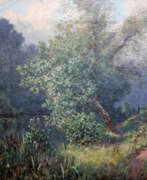

Charles Stephen Meachem is a British landscape painter, poster designer, illustrator and teacher. He studied at the Birmingham School of Art. Samples of his work are in the collections of Graysfield Art Centre and Tunbridge Wells Museum and Art Gallery.


Hans Meid was a German painter, graphic artist and illustrator.
Meid attended an art and craft school in Karlsruhe, and then at the art academy he became a pupil of impressionist Wilhelm Trübner (1851-1917) and realist Walter Kontz (1872-1947). In 1907 the Meissen porcelain manufactory engaged him as a designer; in 1908 he settled in Berlin as a freelance artist. His success was recognized with the Villa Romana Prize (1910) and membership in the Berlin Secession (1911). In 1919 Meid became a lecturer in printmaking at the University of Fine Arts in Berlin. In 1927 he was elected a full member of the Prussian Academy of Fine Arts, where he also headed the graphic arts workshop.
In the first decades of the twentieth century Hans Meid, together with his close friend Max Slevogt, was one of the leaders of Impressionism. He created an extensive collection of etchings, lithographs and engravings, a large number of illustrations for works of world literature, including Cervantes' Don Quixote, Goethe's Selective Affinity and many others. He designed book covers for 44 publishers (notably Schünemann and S. Fischer). He later added ink drawing, watercolor and oil painting. In 1948 Hans Meid became a lecturer at the State Academy of Fine Arts in Stuttgart, he was also a member of the German Artists' Association.
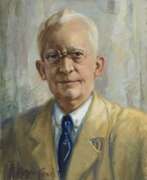

Hans Meyer-Kassel was a German and American landscape painter, illustrator, and draftsman.
He received a classical art education in Munich and served as a war painter during World War I. Later as a portrait painter he depicted numerous European officials on commission.
In 1922 Meyer-Kassel emigrated to the USA and in time became a revered painter in that country. He painted views of New York City and city life, seascapes, still lifes, and later portraits of famous people. Four portraits of Nevada governors, where he lived his last years, adorn the walls of the state capitol building.


